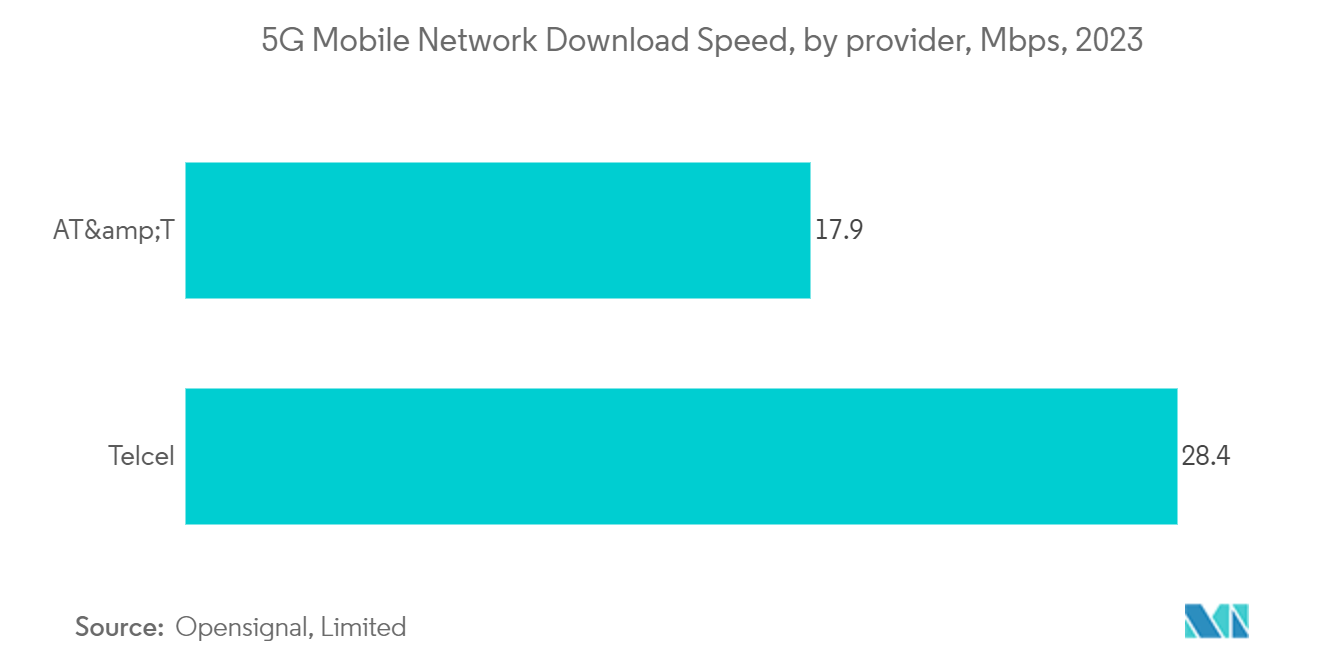Market Trends of Mexico Data Center Networking Industry
Ethernet Switches is Anticipated to be the Largest Segment
- An Ethernet switch is a type of networking hardware that serves as the foundation of networks and the Internet. Ethernet switches connect wired devices, such as computers, Wi-Fi access points, PoE lighting, IoT devices, and servers, to an Ethernet LAN, enabling communication between them and access to the Internet.
- Ethernet switches find broad applications in industrial infrastructure, including smart grids, security and surveillance, intelligent rail and transportation, and other utilities, driving the industrial Ethernet switch market. In smart grids, Ethernet switches play a crucial role in substation automation, reducing the effort and complexity of cabling among various power transmission and distribution substation devices by integrating them into Ethernet-based networks.
- In November 2022, Siemens renewed and upgraded its Scalance XC/XR-300 series of industrial Ethernet switches, enhancing them with additional features for next-generation industrial networks. These managed layer 2 switches, part of the Scalance X Industrial Ethernet Switch product family, are available in both compact models and a 19-inch version suitable for control cabinets.
- The range of industrial Ethernet switch products available reflects the vendor's continued product expansion beyond traditional 8-port DIN rail switches and application-specific services. Vertical integration and infrastructure applications aim for maximum throughput and bandwidth, while factory automation applications may prioritize limiting network traffic.

IT & Telecommunication is Anticipated to be the Fastest Growing Segment
- Approximately 80% of Mexican businesses utilize cloud-based services, employing either private or hybrid cloud models. This adoption stems from favorable government initiatives that have reduced entry barriers for domestic cloud providers and mitigated investment risks linked to technological obsolescence and change.
- Mexican government agencies prioritize delivering cloud-based e-government services as part of their digitalization efforts. This initiative is expected to boost internet usage among the population, consequently driving market growth.
- The phenomenon is widely regarded as the next-generation computing revolution, particularly within major vertical end-use markets like the public sector, banking, financial services and insurance, healthcare, and retail.
- Key players in Mexico's cloud computing industry include Microsoft Corporation, Amazon Web Services, IBM Corporation, Accenture, Oracle Corporation, SAP SE, Google, Rackspace, Salesforce.com, and Telefonica. These cloud service providers aim to expand their service portfolios and existing delivery models—like public and private cloud models—to provide comprehensive solutions to their customers.
- The surge in Mexico's digital economy and the growing number of internet users underscore the escalating need for data storage and processing. Consequently, the proliferation of hybrid cloud service providers has heightened the demand for colocation services and increased rack utilization.


